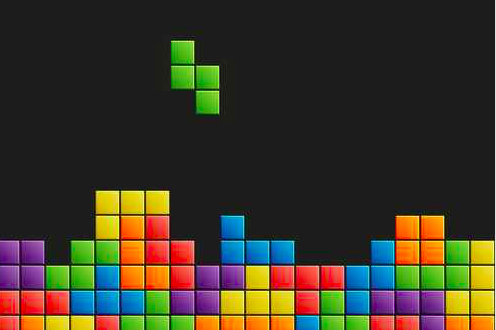
The player can clear multiple lines at once, which can earn bonus points in some versions.

In most versions, the speed of the falling pieces increases with each level, leaving the player with less time to think about the placement. Completing lines grants points, and accumulating a certain number of points or lines cleared moves the player up a level, which increases the number of points granted per completed line. When a line is completed, it disappears, and the blocks placed above fall one rank. : 4 The objective of the game is to use the pieces to create as many horizontal lines of blocks as possible. The player can neither slow down the falling pieces nor stop them, but can accelerate them in most versions. : 377 During this descent, the player can move the pieces laterally and rotate them until they touch the bottom of the field or land on a piece that had been placed before it. Tetris is primarily composed of a field of play in which pieces of different geometric forms, called " tetrominoes", descend from the top of the field.


The longer the player can delay this outcome, the higher their score will be. The game ends when the uncleared lines reach the top of the playing field. The completed lines disappear and grant the player points, and the player can proceed to fill the vacated spaces. In Tetris, players complete lines by moving differently shaped pieces ( tetrominoes), which descend onto the playing field. After a significant period of publication by Nintendo, the rights reverted to Pajitnov in 1996, who co-founded the Tetris Company with Henk Rogers to manage licensing. It has been published by several companies for multiple platforms, most prominently during a dispute over the appropriation of the rights in the late 1980s.
#Tetris dark theme software
Tetris (Russian: Тетрис) is a puzzle video game created by Soviet software engineer Alexey Pajitnov in 1984.


 0 kommentar(er)
0 kommentar(er)
